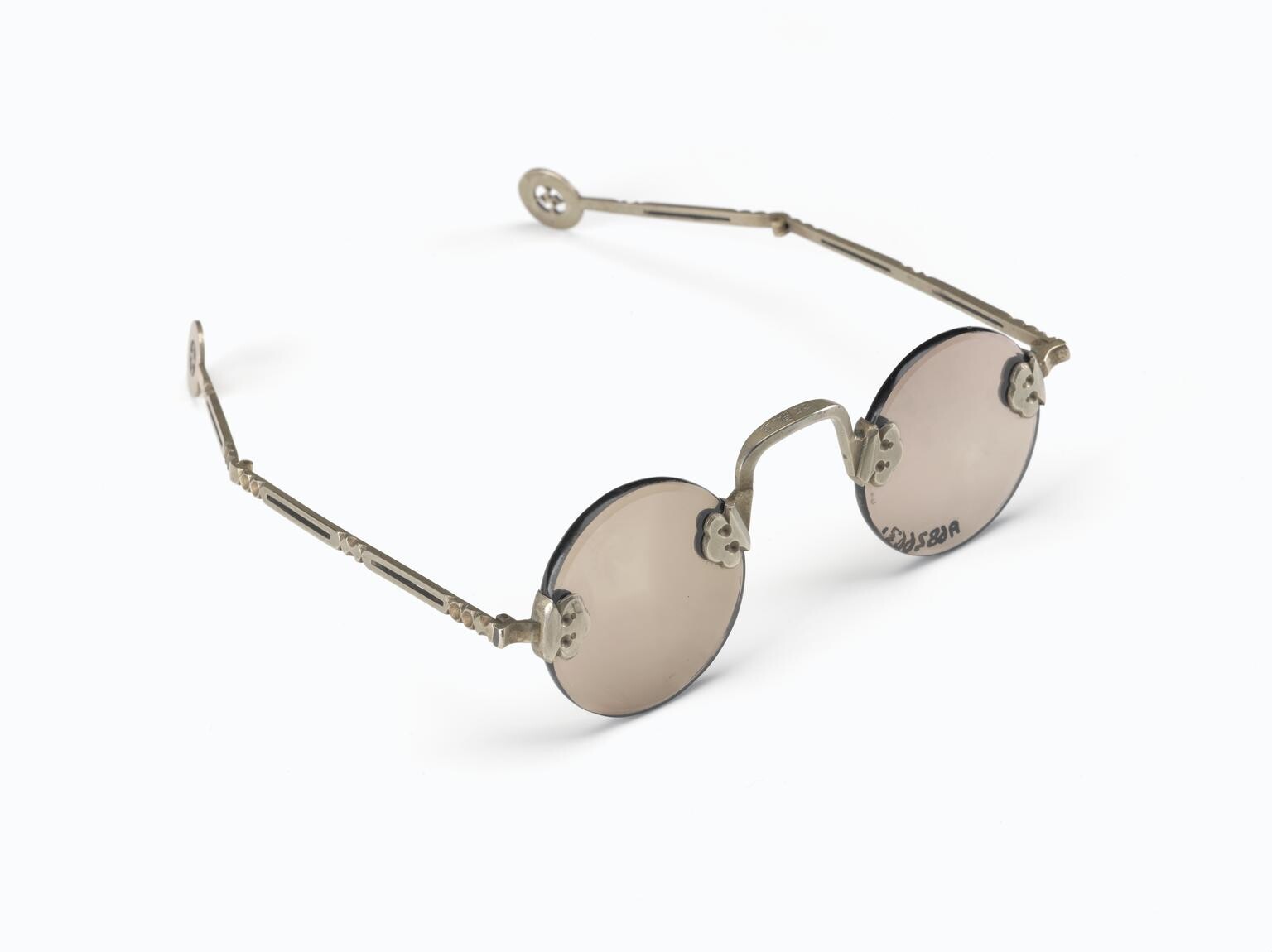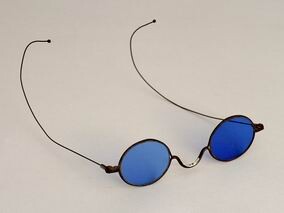The History Of Sunglasses: From Snowblindness To Modern Shades

Now that the relentless, cruel heat of summer is bearing down upon us, it’s time to break out a piece of technology that serves two purposes. The first purpose, of course, is looking cool as hell. The second is preventing the harmful rays of the sun from slowly frying our ocular nerves to a Pillsbury-approved golden brown. I’m talking, of course, about sunglasses. Shades. Clout goggles. Whatever your preferred nomenclature may be.
Nowadays, sunglasses are an essential accessory for everyone from fighter pilots to general creeps. Some even take on a life of their own as an essential part of someone’s identity, with celebrities like Lou Reed, Ozzy Ozbourne, or Steve McQueen. How exactly, though, did we get to this point, and at what point in history did people decide staring directly into the sun, like polio, was maybe something best prevented? Let’s take a look.
Prehistoric Inuit Snowglasses

Though sunglasses might usually be mentally paired with poolside summer days, anyone who’s skied or snowboarded on a sunny day can tell you that the sun’s glare off the snow can be blinded. There’s a reason goggle tans are a thing. With that in mind, it’s not surprising that maybe the first people to ever say “hey man, f**k this” were prehistoric ancestors of the Inuit people, who made “snowglasses” by wearing usually whalebone eye covers with horizontal slits in them to limit glare and prevent snowblindness.
1st Century - Emperor Nero

Public Domain
According to Pliny the Elder, the Roman Emperor Nero had a penchant for a particular type of drip come gladiatorial matches. He would reportedly watch the bone-shattering goings-on through emeralds, which makes modern designer sunglasses look economically responsible. Though green is one of the colors that naturally blocks a large amount of UV light, it’s not clear that Nero’s OG Blublockers were actually effective as sunglasses.
12th Century - Chinese Quartz

When we get to the 12th century, we see the Chinese being to make glasses out of thin lenses of smoky quartz, which honestly wouldn’t look out of place on a red carpet today. Again, glare or UV protection doesn’t seem to be the main intent here, since they were often worn inside. According to records, they were often worn by judges to hide their expressions while witnessing testimony, which is metal as hell. Imagine getting sentenced to death by a judge wearing sunglasses. Not the outcome you’d hope for, but still kind of badass.
18th Century - Gondola Glasses

Public Domain
From here we jump forward to the 18th century, where we start to see the first emergence of sunglasses that follow the two criteria most important today: blocking sun, and looking cool. Opticians in Venice, land of your richest friend’s Instagram posts, developed emerald green sunglasses to protect the eyes against glare off the water. The glasses were worn by nobility, sea captains, and the city’s famous gondoliers. They’re also responsible for maybe the first pair of shades to become a signature accessory, as the playwright Carlo Goldoni was particularly fond of the glasses, and they even took on the nickname “Goldoni Glasses.”
18th Century - Tinted Medical Lenses

Around the same time in England, James Ayscough was starting to explore tinted lenses himself, though his weren’t necessarily about sunblocking. Instead, he thought that lenses with specific tints like blue would be medically beneficial to people with certain ailments. Syphilis is one that’s regularly referenced due to the light sensitivity it causes, though there isn’t definitive evidence of that. Given that medicine back then was basically cutting off someone’s leg and asking if that helped, you can’t blame him for trying.
19th Century - Ultraviolet Blocking

In 1855, the French doctor Theodore-Eduoard Fieuzal would publish a paper entitled Colored glasses in ocular hygiene that would explore the relation between UV radiation and eye fatigue. I mean, everyone for years had known “bright light eyes hurty,” but he finally made it medical. Roughly 40 years later, in 1899, the German optician Rodenstock would offer the first glasses with advertised UV protection.
1913 - Crookes Lenses

In 1913, the British chemist and physicist William Crookes would invent a new type of tinted UV protection lenses using cerium. These cerium-tinted lenses completely blocked ultraviolet light, and the lenses were named “Crookes lenses” after their inventor.
1929 - Foster Grant

The first to take sunglasses truly to the public was a company that still exists today, and one you’ve likely seen around. Unfortunately, for such a storied company, they mostly today seem relegated to picked-apart carousels in the back of a CVS. This is the company Foster Grant. In 1929, Sam Foster realized that plastic injection molding could be used to mass-produce affordable sunglass frames, and took his new sunnies to the Atlantic City boardwalk. Did it work? Well, you’re reading this article right now. They were a massive hit, and also became a favorite accessory of an occupation they’re still deeply connected with today: movie stars.
1935 - Polarization

The next big development came from party photography magnate Polaroid. They were responsible for developing polarization technology, and in 1935 they partnered with eyeglass producer American Optical to create the “Polaroid Day Glasses.” These were the first polarized sunglasses, which were adept at filtering out light, especially reflected glare, instead of just making everything dark.
1938 - The Ray-Ban Aviator

Ray-Ban
We’ll end our optical journey with the introduction of possibly the most iconic sunglass of all time: the Ray-Ban Aviator. Developed for pilots who were complaining of headaches and difficulties due to the strong sunlight, Ray-Ban developed the Aviator, which first launched with a plastic frame in 1937, but one year later, the frame was switched to the thin metal we know and still wear today.
So, what started with Inuits carving holes into whalebone to prevent snowblindness ends with an essential part of any good music video. Plus, now, next time you see a friend wearing sunglasses, you can offer to give them a couple facts about their history. To which, if they’re as cool as their sunglasses suggest, they’ll respond by shoving you into a locker or pool. Good luck!
Top Image: Julian Idrobo/Pixabay